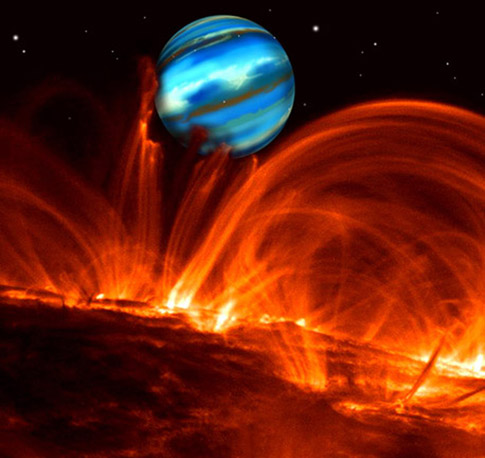|
It's the Astronomy Online non-Blog, or un-Blog.
Everyone has a blog now and since I am no follower of trends, I decided to merge the blog with the website. And I don't want to neglect the website in favor of posting on the blog.
These are the pages that were on the blog of old:
- Home
- Archive (Index of Pages)
- Me
- Current Trends
- Links
- Soho Live
Links:
Google Maps - Mars
Google Maps - Moon
HiRISE
HiRISE - MRO Imaging
Mac Singularity
Meade4M
Slackerpedia Galactica
Software for the Mac
Starry Night Online
Venus Maps
More Favorites:


































Thank you for visiting!
|
|
 |
|
Detection of a Magnetic Field around Tau Bootis:
Amateurs engaged in the study of exoplanet detection know Tau Bootis as a host on an exoplanet that was detected by a group of amateurs. What is more remarkable is that the detection method was radial shift spectroscopy! The group, Spectrashift, has the information on the methods of their detection on their website.
Now Tau Bootis is the first star in which astronomers have directly detected a magnetic field - with the help of of its planet.

An illustration shows the magnetic field of the planet-hosting star Tau Bootis. C. Catala/ J-F. Donati/ E. Shkolnik/ D. Bohlender/ E. Alecian.
Using the ESPaDOnS spectropolarimeter installed on the Canada-France-Hawaii telescope (Mauna Kea, Hawaii), an international team of researchers led by two French astronomers (C. Catala, LESIA, Observatoire de Paris, and J.F. Donati, LATT, Observatoire Midi-Pyrénées), has just discovered a magnetic field on Tau Bootis, a star orbited by a giant planet on a close-in orbit. This is the first ever detection of this kind. Until recently, scientists only had indirect clues to point to the presence of magnetic fields on stars hosting giant extra-solar planets. This discovery opens major prospects, in particular the study of the interaction between the planet and the magnetosphere of its star. This discovery is published in a Letter to the Monthly Notices of Royal Astronomical Society Journal.
The catalogue of extrasolar planets is growing continuously. Today it contains more than 200 objects, and the detection of these exoplanets has almost become a routine. But what are the characteristics of the stellar hosts, how can we explain the formation of these planetary systems, and why are some of these giant exoplanets, called "hot jupiters," migrating down to very close-in orbits? Astrophysicists suspect the magnetic field to play a crucial role in some of these questions. However, although indirect effects of magnetic fields have already been detected on stars hosting giant extrasolar planets, no direct measurement had ever been done until now.
This first measurement of a magnetic field in a planet-hosting star has been obtained by an international team of astronomers with the ESPaDOnS spectropolarimeter installed on the Canada-France-Hawaii telescope. They detected that the magnetic field of Tau Bootis, a one billion year old star, has a mass of one and a half solar masses and is located nearly 50 light years from the Earth. This cool and weakly active star orbited by a giant planet with 4.4 Jupiter masses on a very close-in orbit at 0.049 AU (i.e. 5% of the Sun-Earth distance) possesses a magnetic field of a few gauss. This is just a little more than the Sun's magnetic field, but in structure, tau Bootis is much more complex than the Sun.
Moreover, astronomers have also measured the level of differential rotation of the star, a crucial parameter in the generation of magnetic fields. In the present case, the matter located at the equator rotates 18% faster than that located at the poles, leading by one full turn in approximately 15 days. By comparing the differential rotation of the star with the revolution of the giant extrasolar planet, astronomers have noticed that the planet is synchronized with stellar material located at about 45 degrees. This observation suggests very complex interactions between the magnetosphere of the star and its companion, perhaps similar to the interaction of the magnetosphere of Jupiter with its satellite Io, giving rise to the so-called "Io torus."
The data collected for this study are not sufficient to describe precisely these interactions, but this first measurement is opening new prospects for detailed studies of star-planet systems.
Credit: Astronomy Magazine
Next Post | Previous Post | Back to Top
|
|

